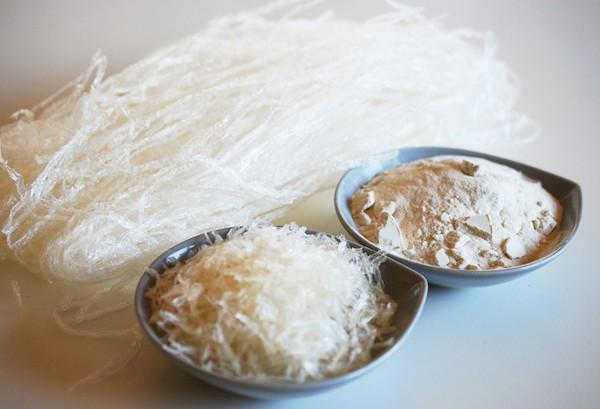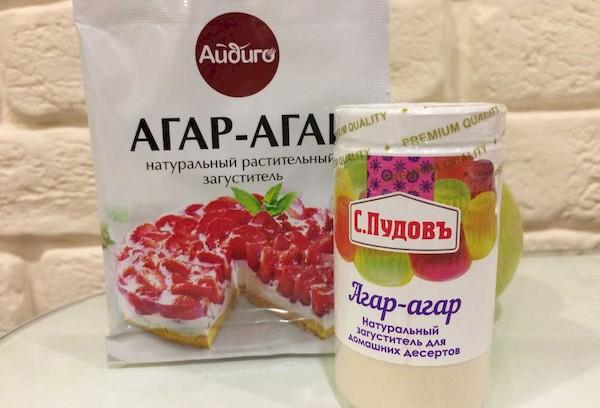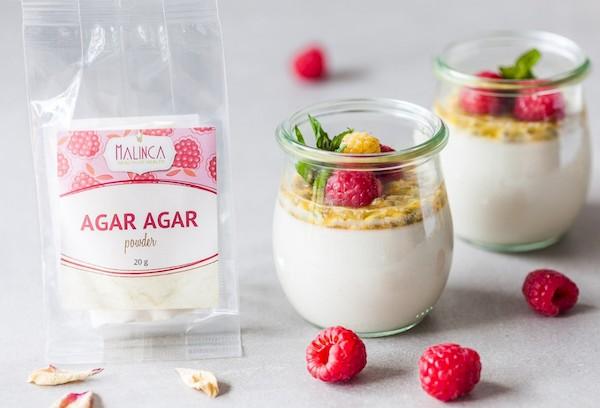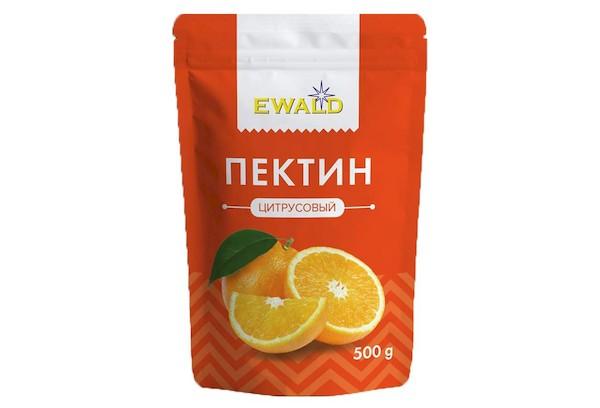What is agar-agar in cooking?
Content:
Agar-agar is a thickening, gelling substance, seasoning used in cooking as a structure former (changes the consistency of the dish). This is a natural product, it is obtained from algae. Marshmallows, marmalade, souffles, and other sweets and jelly-like dishes are prepared with agar.
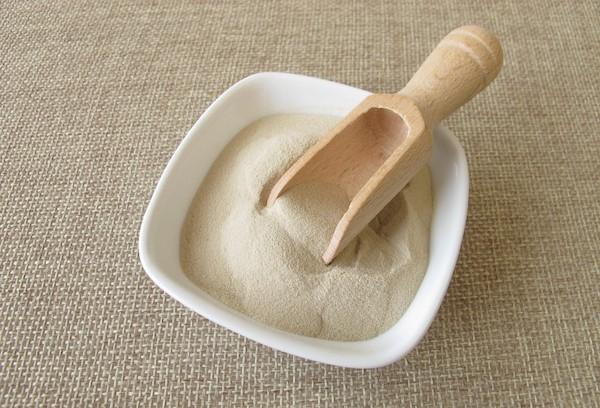
What is agar-agar?
To understand what “agar” is, let’s translate the name into Russian. Translated from Malaysian, “agar” means “jelly”. This is a vegetable substitute for gelatin. In aqueous solutions, when heated, it forms a jelly.
How is it produced?
The substance is extracted from various types of purple algae (red algae) growing in the White Sea, Black Sea, and also in the Pacific Ocean. What are they made from:
- Gracilaria algae;
- Phyllophora;
- Ceramium;
- Gelidium and others.
Production consists of several stages:
- Algae mining.
- Cleaning and rinsing.
- Treatment with water and alkali.
- Extraction followed by filtration.
- After hardening, the agar is pressed, dried and crushed.
It is available in the form of powder (most often), flakes, granules, cereals, films, and plates.
Well-known TMs: Aidigo, Ewald, Spirulinafood, Sosa, Denagar, Guzman, Roko, S. Pudov, Kotanyi, Pripravka.
Agar was first produced in Japan (the Japanese call it “fish glue”) from the genus Euchema algae in 1658. According to legend, one Japanese gentleman, whose name was Shimazu, stayed in a village inn on the shores of the Pacific Ocean. For dinner he ordered seaweed soup. The half-eaten dish was left on the street. In the morning, Shimazu saw a gel-like mass in the plate, and after a couple of days the soup became “glassy.” The Japanese boiled it and got a transparent jelly with a neutral taste and smell. Soon Japanese scientists developed agar-agar. The term appeared in Russian only in 1978.
Composition and calorie content
Agar contains two polysaccharides:
- agarose;
- agaropectin.
This is a 100% natural product.
The calorie content of 100 g of food agar is 300-370 kcal (dry powder). It contains no fats or dietary fiber. There are 4 g of protein, 76 g of carbohydrates and 18 g of water. Among the useful substances - a small amount of calcium and vitamin PP.
Note. Some seasonings are called agar gelling mixture. Maltodextrin (a polysaccharide derived from starch) may be added to the composition.
Use in cooking
The product is used in the food industry, medicine, microbiology. Most in demand in the confectionery business. Today, the production of products using structure formers and molecular gastronomy are developing dynamically, and few confectioners can do without agar.
Product labels indicate E406. Can be found in confectionery products, ice cream, less often in semi-finished meat products, allowed in halal meat.
You can use the seasoning at home when preparing various dishes. By the way, agar comes in different strengths. Confectioners use especially strong types, with a strength of 900 or 1200 Bloom.They are rarely sold in regular supermarkets. Professionals buy high-quality seasoning in confectionery stores and order from marketplaces.
How and why they are used
The product is added to liquid media. How to use agar:
- The norm for 1 liter of liquid is 5-15 g, depending on the dish (for marmalade, the recommended dosage is 10-15 g).
- In order for the product to harden, the liquid must be boiled for 5 minutes.
- The boiling should be barely noticeable. The heating temperature should not exceed 110 degrees.
- The substance loses its properties in an acidic environment. When preparing sour desserts, the amount of agar is increased by 30%.
- How to use when thickening acidic juices: boil the agar separately with a small portion of water. Bring the juice to a boil too. Then mix the liquids and let them cool slightly.
- Excessive amounts of sugar disrupt the gelling properties - the mass becomes loose.
- Solidification occurs when cooled to 40 degrees.
What can you cook with agar-agar:
- homemade marshmallows;
- confectionery gel;
- pearl tea (bubble tea) with tapioca or boba;
- jelly candies;
- molecular spaghetti;
- jam;
- marmalade;
- Cake pigeon's milk";
- souffle.
What can be replaced?
Some recipes allow replacing agar with pectin or gelatin. But the dish will have slightly different properties and may differ in taste. For example, if you make gummies with gelatin instead of agar, they will melt at room temperature.
The rate of gelatin is higher than that of agar. The approximate ratio is 1 to 8. To replace 3 g of agar-agar, you will need 24 g of gelatin (and vice versa).
You can replace it with pectin. Pectin is also 100% natural and of plant origin - made from fruits.The viscous and viscous consistency is suitable for marmalade, jam, confiture, and mousse. For 1 kg of product, 15 g of pectin is used. If you add 500 g of sugar, the dosage is reduced to 5 g of dry matter (works better with sugar and acid).
Less known analogues: carboxymethylcellulose mastic thickener, corn starch, starch-based thickeners, glucose syrup, invert sugar (trimoline).
How is agar-agar different from gelatin?
Both products are natural and belong to the same category of food thickeners and structure formers. But the difference between agar-agar and gelatin is significant. What is the difference between agar:
- The color is opaque, white or mustard (white agar powder is better, dark agar powder may smell like algae). Gelatin is colorless or yellowish. If it's of poor quality, it smells and tastes like glue.
- Made from plants, gelatin is made from cartilage, bones, tendons, and the skins of cattle and pigs.
- Does not melt at room temperature and heat, unlike gelatin.
- It hardens faster and does not require a refrigerator to harden.
- The jelly is denser with less powder.
- Permitted for consumption by Muslims, believers during fasting, and vegetarians.
Question answer
Why doesn't it freeze?
Agar does not harden immediately, but after cooling. It may not harden if the amount of powder (plates, granules) is reduced. Different companies may have different strengths and consumption. Poor curing may indicate a poor quality product or a product that has expired.
How long is it stored?
From 1 year to 2 years in sealed form.
How to store?
Opened packaging should be tightly closed and stored separately from spices and other odorous products.It is recommended to store at a temperature of +15 +25 degrees and humidity up to 75%.
Agar-agar is a structure former in cooking that does not fully replace gelatin or pectin, although it has similar properties. Each species is special. Agar produces the densest jelly, which breaks down and does not melt at room temperature. It's good for jellies, but not too much for jellied meats. To ensure that your dishes are always successful, it is advisable to keep all three thickeners in your kitchen cabinet.
